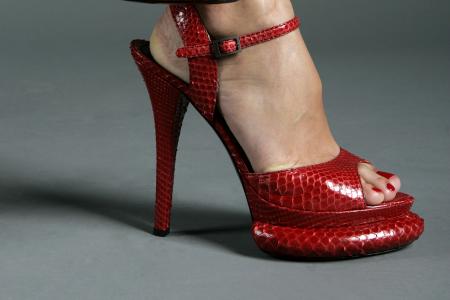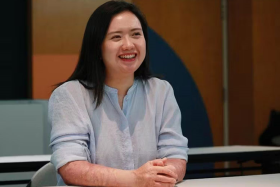How to manage your foot pain
Describe your day job and say how you are different from other bone doctors.
I am a bone and joint doctor. I specialise in treating and reconstructing the lower limb - knees, ankles and feet. I specialise in minimally-invasive (keyhole) surgery of the lower limb which enables patients to recover faster with minimal scarring. This way, they can resume their normal activity faster.
Tell me something fascinating about feet.
Our feet must be one of the hardest working organs in our body and yet one of the most neglected. We take thousands of steps a day in different types of footwear.
The feet and ankles have a complex connection of bones and strong ligaments that allow us to stand, pivot, twist, tiptoe and push off. So it's not hard to understand why there can be so many injuries and deformities in the foot and ankle region.
Twenty-five per cent of the bones in the human body are down at our feet. When these bones are out of alignment, so is the rest of the body.
Do you find yourself staring at feet and ankles at parties? Have you been caught doing that?
Almost all the time. At kids' birthday parties, the pool, social gatherings.
Most of the time, a person with a lower limb problem has a limp or swelling. So it's difficult not to ask what happened to the leg when I see someone limping.
I was at a children's party recently. One of the mothers was limping around. She apparently injured her heel area after a slip on the staircase the day before. As she was wearing socks that day, nobody noticed that the back of her ankle was swollen and bruised.
I offered to take a look at it and saw that she had an Achilles tendon tear. You can imagine the awkward glances from the other mums and dads when they saw me examining her leg at the party.
When do you operate on the foot and ankle?
An acute problem like a displaced fracture may need surgery.
Some foot and ankle fractures that are not displaced can be managed with a cast or a special walking boot.
Tendon and muscle inflammation and injuries are managed with painkillers and physiotherapy.
Some feet conditions require an insole or customised orthotics to be fitted into the shoes.
Only when all options for nonsurgical methods and activity modifications have been exhausted, will I offer elective surgery.
Another special group of patients are the diabetic, who may need surgery to prevent deformities and ulcers from setting in. Diabetic foot surgery is very specialised and needs to be handled by highly trained foot and ankle specialists.
I have also operated on patients for functional or cosmetic reasons as the appearance of the leg and feet is crucial in their line of work.
What advice do you have with regard to caring for our feet?
Foot care starts with proper footwear.
Women love high heels. Although the occasional wearing of heels is all right, studies have linked long-term heel wear to plantar facial pain (heel pain), bunions, Achilles tendinosis and claw toes.
Foot hygiene is also important, especially for diabetic patients.
It is important to change our socks and wash our feet regularly. After a shower, it's important to clean between the toes to prevent any skin maceration.
We have to keep our feet moisturised as dry skin leads to cracks in the sole. Poor foot hygiene and cracked skin is a precursor for bacterial and fungal infections.
Do you need an arsenal to deal with pain of the foot and ankle? What's in your artillery bag?
Painful swelling is often the first symptom in foot and ankle conditions and an important indicator for the location of the problem.
In order to treat immediate swelling and inflammation, I would prescribe an anti-inflammatory drug, like Celebrex, or a nerve pain modulator, such as Lyrica, which reduces inflammation and alleviates nerve pain in the foot.
I also prescribe customised insoles and walking boots to patients to help them over the painful period, giving them proper mobility without limping.
What's the perk of your job?
I get immense satisfaction in getting my patients back on their feet soon after treatment.
In many instances, patients' quality of life improves after simple surgery as they are able to return to their favourite sports, wear their favourite pairs of shoes and are no longer ashamed with their previously deformed feet.
With modern day implants and cutting edge reconstructive techniques, I am grateful for the opportunity to help save my patients' limbs.
Dr K Kannan is an orthopaedic surgeon with the Centre for Foot & Ankle surgery. He is also a visiting consultant at Tan Tock seng Hospital.
Get The New Paper on your phone with the free TNP app. Download from the Apple App Store or Google Play Store now



